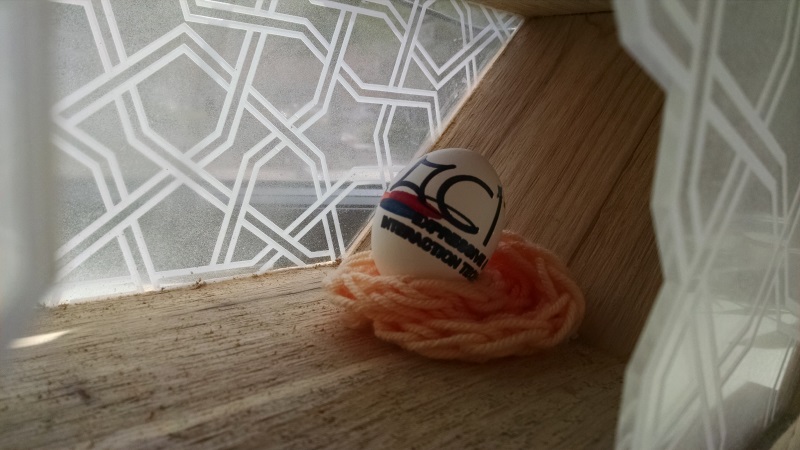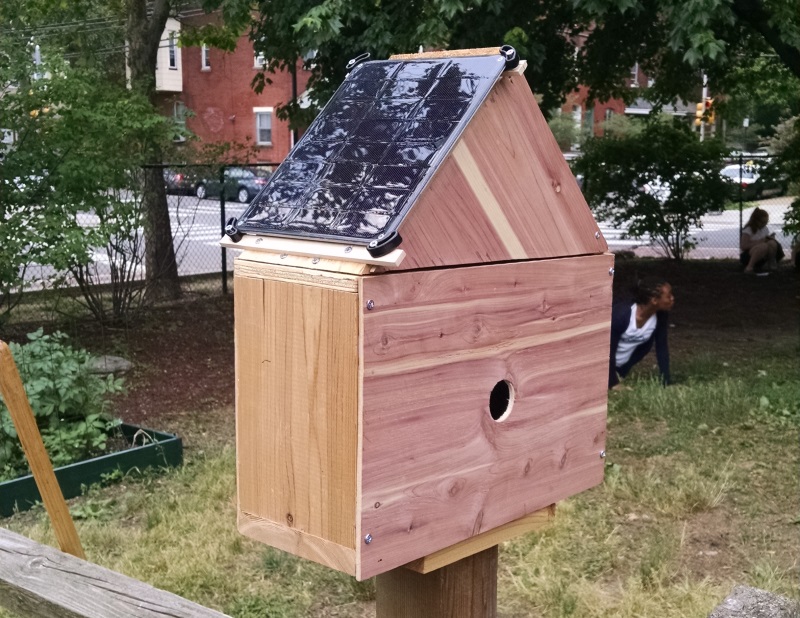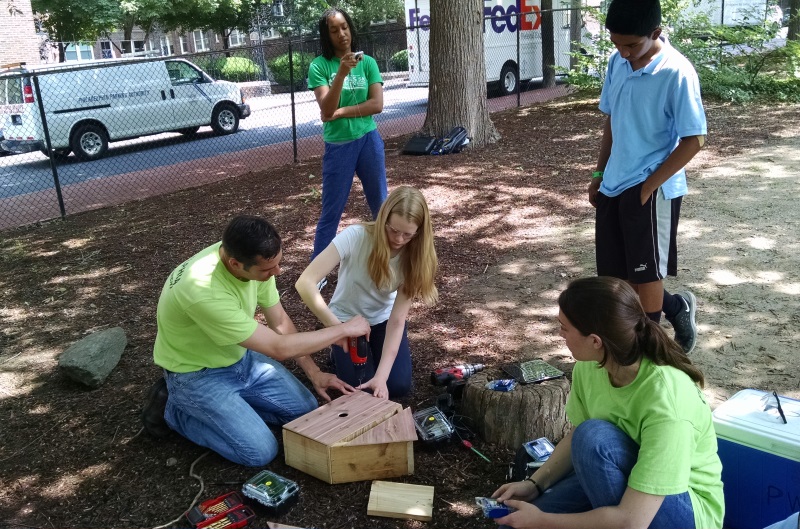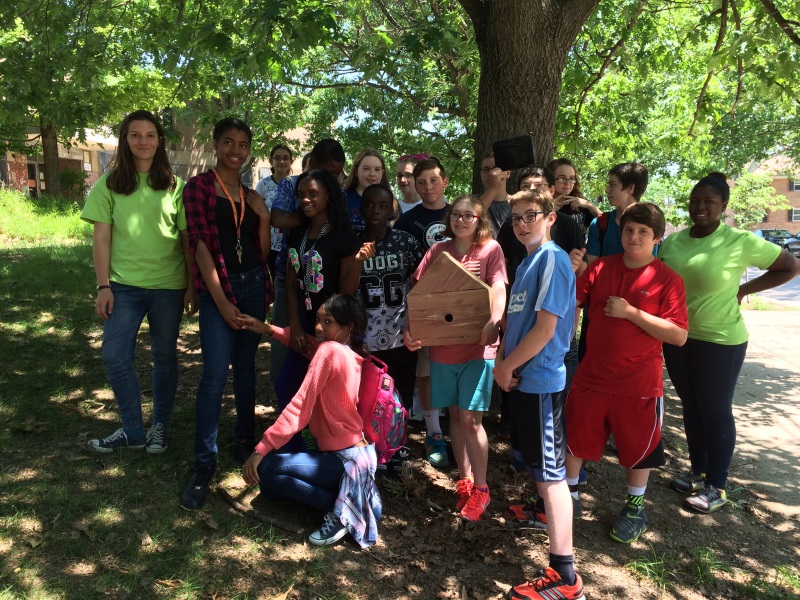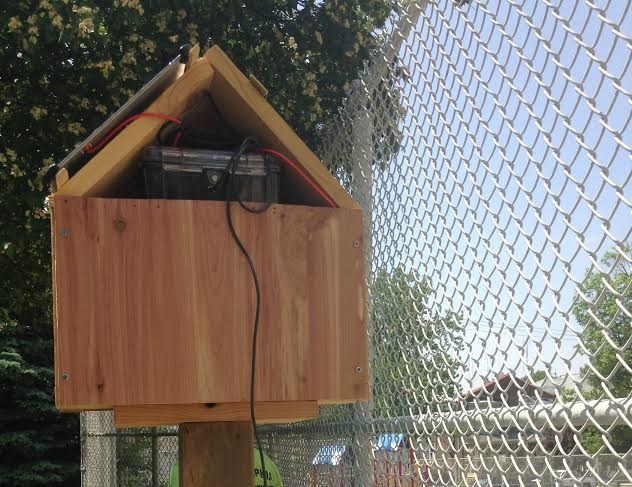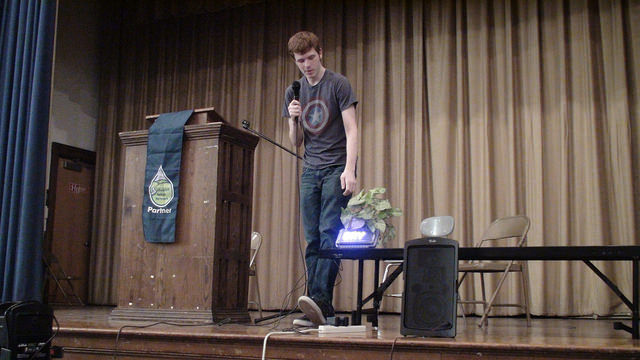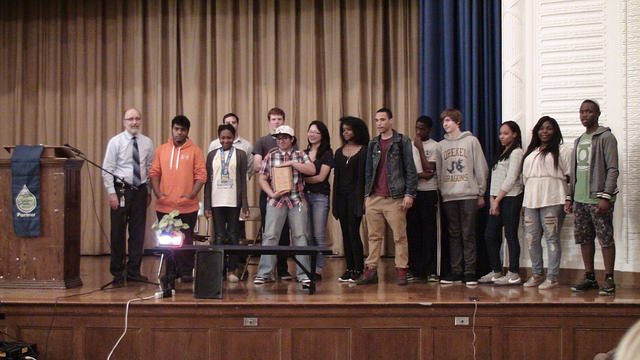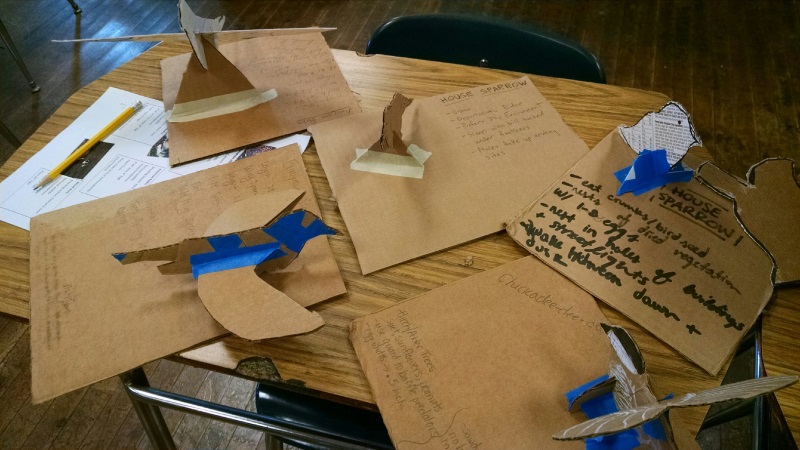Delivery & ExCITe-ment
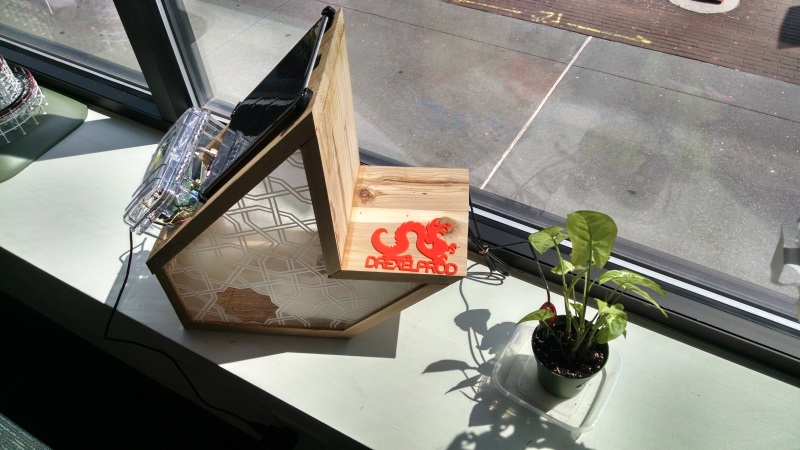
The weekly classes we taught at Science Leadership Academy’s Beeber campus this past spring took place with the support of Seed Project funding from Drexel University’s ExCITe Center. Last Friday, we set up one of our students’ birdhouses there for visitors to see.
Ninth grade students Abdul and Cinque designed this birdhouse for a cardinal. They incorporated the plastic walls because their research indicated that cardinals prefer open nests, and they thought the plastic would give the house a more open feel. For style, and in representation of Abdul’s religion, they etched an Islamic pattern into the plastic.
This birdhouse reads the soil moisture levels in the plant beside it. Inside we placed a small egg where the birds would normally nest. If you’re at the ExCITe Center, you can check out the video feed here.
The ExCITe Center’s funding allowed greenSTEM to develop this year’s birdhouse project and teach students to program Arduinos and apply technology to environmental problems.
This birdhouse is one of four designs created over the course’s 16 weeks. Each design incorporated solar power and datalogging via a wifi connection. In addition, all birdhouses have two rooms—one for birds, and one for electronics. The infrared cameras capture HD video of the birds inside the houses and stream it live to computers inside the schools for several hours each day. They also take temperature and soil moisture readings. The temperature data indicates how comfortable the birds are inside their home, and the soil moisture levels indicate when school gardens require watering. The birdhouses use low-cost technologies such as the Arduino microcontroller and the Raspberry Pi single-board computer.
Because the ExCITe Center’s new birdhouse is hooked up to a steady internet connection and power source, we currently have it streaming during the entirety of the center’s hours of operation.
Philadelphia Water staff collaborated with the Fairmount Water Works, Public Workshop and Jarvus Innovations. Drexel University undergraduates Darya Dragun, Marika Zeldenrust and Alexandra Jones, along with Temple intern Olivia Williams, were key contributors to the project. Plans are already being hatched (no birdhouse pun intended) for next year’s greenSTEM project.



